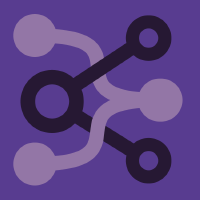Topic Editors

Agents and Multi-Agent Systems

Topic Information
Dear Colleagues,
In recent years, agent-based technology has become a popular tool for solving engineering issues. Thus far, multiagent systems (MASs) in automatic control have developed rapidly. Examples of MAS may include large crowds during public events, autonomous highways, flocks of birds, social media websites, and drones in flying formations. Typical application scenarios of MAS control may include cooperative industrial robots, coordinated unmanned systems, sensor networks, and smart grids, to name just a few. The goal of the entire system is achieved through the use of local interactions between agents. For example, the number of distributed energy components and devices in the smart grid continues to increase globally, and distributed control solutions are ideal solutions for managing and utilizing these devices and large amounts of data. While distributed control needs to go beyond traditional technologies, typical challenges of distributed control may come from limited communication and decentralized computing, thus requiring the control implementation to be sufficiently simple.
Prof. Dr. He Cai
Prof. Dr. Maobin Lv
Topic Editors
Keywords
- multiagent systems
- biological swarm systems
- networked control systems
- distributed optimization
- decentralized dynamic programming
- multiagent learning algorithms
- cooperative industrial robots
- coordinated unmanned systems
- sensor networks
- smart grid
Participating Journals
| Journal Name | Impact Factor | CiteScore | Launched Year | First Decision (median) | APC | |
|---|---|---|---|---|---|---|

Applied Sciences
|
2.7 | 4.5 | 2011 | 16.9 Days | CHF 2400 | Submit |

Electronics
|
2.9 | 4.7 | 2012 | 15.6 Days | CHF 2400 | Submit |

Energies
|
3.2 | 5.5 | 2008 | 16.1 Days | CHF 2600 | Submit |

Modelling
|
- | - | 2020 | 15.8 Days | CHF 1000 | Submit |

Systems
|
1.9 | 3.3 | 2013 | 16.8 Days | CHF 2400 | Submit |

MDPI Topics is cooperating with Preprints.org and has built a direct connection between MDPI journals and Preprints.org. Authors are encouraged to enjoy the benefits by posting a preprint at Preprints.org prior to publication:
- Immediately share your ideas ahead of publication and establish your research priority;
- Protect your idea from being stolen with this time-stamped preprint article;
- Enhance the exposure and impact of your research;
- Receive feedback from your peers in advance;
- Have it indexed in Web of Science (Preprint Citation Index), Google Scholar, Crossref, SHARE, PrePubMed, Scilit and Europe PMC.


